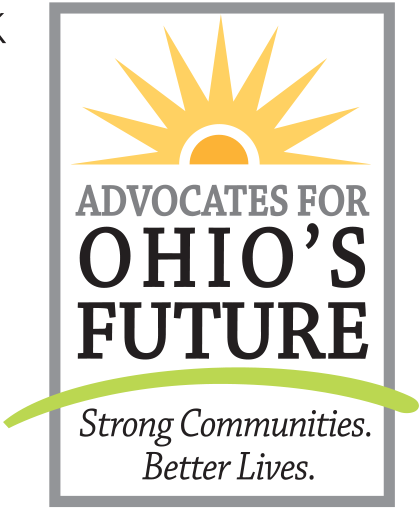By Sarah Hudacek, AOF Policy Associate
In Governor DeWine’s Executive budget, many advocates were surprised by the proposal of a new cabinet-level department, the Ohio Department of Children and Youth. The creation of this new department would cement the Governor’s legacy of investing in kids following his creation of the Governor’s Office of Children’s Initiatives in January 2019.
The creation of a new cabinet department is a major undertaking by the administration, so we’re diving into what the current cabinet looks like, the last time a cabinet department was created, and what role the new department would play.
The Current Cabinet
Governor DeWine’s current Cabinet is made up of 26 departments and offices:
Department of Administrative Services
Department of Aging
Office of Budget and Management
Bureau of Worker’s Compensation
Governor’s Office of Children’s Initiatives
Department of Commerce
Department of Development
Department of Agriculture
Department of Taxation
Department of Developmental Disabilities
Ohio Environmental Protection Agency
Department of Health
Department of Higher Education
Department of Insurance
Department of Job and Family Services
Ohio Lottery
Department of Medicaid
Department of Mental Health and Addiction Services
Department of Natural Resources
Opportunities for Ohioans with Disabilities
Department of Public Safety
RecoveryOhio
Department of Rehabilitation and Corrections
Department of Transportation
Department of Veterans Services
Department of Youth Services
Recent Cabinet Changes
Name changes for existing cabinet agencies are fairly common, such as the renaming of the Board of Regents to the Department of Higher Education in 2015, the change from the Rehabilitation Services Commission to Opportunities for Ohioans with Disabilities in 2013, and the long, long overdue renaming of the Ohio Department of Developmental Disabilities in 2009 away from the previously named department that included extremely outdated and derogatory language.
The creation of new cabinet agencies occurs less frequently. The majority of the governor’s cabinet agencies are more than 50 years old. The most recent cabinet creations are as recent as the Governor’s Office of Children’s Initiatives and RecoveryOhio in 2019, but both of these offices are distinct from the other cabinet agencies because they are much smaller and are contained within the Governor’s office and its 33 employees.
The last time a new department was created was when the Department of Medicaid split from the Department of Job and Family Services in 2013. Also in 2013, the Department of Mental Health and Addiction Services was created by the merger of the Department of Mental Health and the Department of Alcohol and Drug Addiction Services. Before that, the Ohio Department of Job and Family Services was created by the merger of the Department of Human Services and the Bureau of Employment Services in 2000. The most recent case of a governor’s office expanding into a department was in 2008 when the Governor’s Office of Veterans Affairs became the Department of Veterans Services.
It’s interesting to note that each of the three previous Ohio governors - John Kasich, Ted Strickland, and Bob Taft - all oversaw the creation of at least one new cabinet department.
The New Department
The new Ohio Department of Children and Youth (ODCY) would incorporate programs from six other Cabinet agencies: the Departments of Job and Family Services, Health, Developmental Disabilities, Education, Mental Health and Addiction Services, and Development.
The programs that would be consolidated under ODCY include:
Help Me Grow: Provides maternal health and wellness screenings, child health and development screenings, parenting education, referral to social supports and more for families under 200% FPL.
Healthy Beginnings at Home: Currently in pilot phases, supports stable housing initiatives for pregnant mothers to improve maternal and infant health outcomes.
Infant Vitality Programs: Funds maternal health programs, services and supports to pregnant mothers, including safe sleep programs, group prenatal care, preconception education, patient navigators, community health workers, newborn screening, safe birth spacing, gestational diabetes support, smoking cessation for pregnant women, breastfeeding support, and care coordination.
Early Intervention: Programs and funding for kids ages three and under with disabilities or at risk of developmental delays.
Strong Families Strong Communities: Assists families in avoiding crisis and in crisis intervention.
Dolly Parton Imagination Library: Program that provides free books to children
Early Care and Education: Publicly Funded Child Care program, including tiered Step Up To Quality incentive payments that recognize and promote quality child care programs.
Early Childhood Education: Funds to increase the number of low-income children, children with disabilities, and children with limited English proficiency in quality early learning programs. Provide incentives to help programs implement continuous quality improvement.
Kinship Permanency Incentive Program: Time-limited incentive payments to kinship caregivers who have been awarded legal custody or guardianship of a child by a court. Gross income cannot exceed 300%. Provides a maximum of 8 payments - initial payment of $525 per child, then $300 every six months.
Adoption Services: Adoption payments and adoption subsidies for families who adopt children with disabilities, behavioral health needs, older children, a group of siblings, or children with medical needs.
Infant Health Grants: Funds to continue and expand the pathways community HUB model to reduce infant mortality.
Early Childhood Mental Health: Identification and intervention for early childhood mental health to reduce preschool through 3rd grade classroom expulsions.
Family and Children First: Funds to state level and local governments to enhance community capacity, coordinate services and engage families
Children’s Trust Fund: Ohio’s primary funding agent for programs to prevent child abuse and neglect.
Preschool Special Ed: Special education and services to children with disabilities ages 3-5.
Foster Care: Funds monthly foster care payments to foster parents or institutions to support an out-of-home placement for a child. Currently, payments vary by county and by the needs of the child. This line item would create a new tiered foster care payment structure to establish consistent foster care payment rates and incentivize caring for higher needs children and youth. Also funds Independent Living services for youth 14 years or older who are in substitute care to help with the transition into adulthood and self-sufficiency.
Maternal and Child Health Block Grant: Funds to reduce maternal and infant mortality, improve nutrition of children, reduce adolescent and young adult suicide, prevent and mitigate adverse childhood experiences, and more.
Child Welfare: Programs preventing child abuse and neglect, providing services to abused and neglected children, licensing foster homes, investigating abuse and neglect, and some family preservation and reunification services. Administered by county public children services agencies.
Family and Children Services: Includes Kinship Care Navigator Program, Kinship Supports Program, Kinship Guardianship Assistance Program, Multi-System Youth funds, State Child Protection funds. Also funds Wendy’s Wonderful Kids Program for professional recruiters who find permanent homes for Ohio foster care children.
It’s also notable that the Special Supplemental Nutrition Program for Women, Infants, and Children (WIC) would remain under the Ohio Department of Health, and that programs funded through the Temporary Assistance for Needy Families (TANF) grant would be split between ODJFS and ODCY, with the Ohio Commission on Fatherhood, Ohio Works First cash assistance, and the Prevention, Retention and Contingency emergency supports program all remaining under ODJFS. TANF funds must be used for families with children, and Ohio continues to struggle with getting TANF funds out to families in need, as evidenced by our growing TANF underspend balance, so it will be interesting to see how ODCY and ODJFS are able to tackle this administrative challenge.
The current Director of the Governor’s Office of Children’s Initiatives, Kara Wente, is widely expected to become the first Director of the Department of Children and Youth. If approved in this year’s operating budget, ODCY would begin operations on January 1, 2025.

